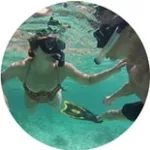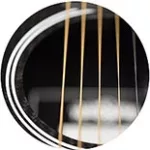
Traditional Chinese medicine, or TCM, has appealed to the curious and those wanting-to-be-cured for millennia. With its origins dating back as far as 3,000 years – or so legend has it – Traditional Chinese Medicine has gained favor in the West as well, particularly as it is practiced more widely and its benefit better understood.
Travel to China on tour and there’s a perfect opportunity to enjoy an authentic TCM experience.
Apart from countless practices where patients receive treatment, there are entire hospitals dedicated to delivery of traditional Chinese medicine treatments, even as western medicine becomes more popular.
As with many areas in technology and science, the Chinese were well advanced of their western counterparts at the same time. Legend has it that as far back as 3,000 BC, Xuanyuan Huangdi is said to have penned the first medical work, supposedly stating “it was possible to use words and organize them into large scale medical works”. Although never officially substantiated, this way of thinking certainly set the stage for an approach to medicine that advocated prevention and the preservation of health.
History of traditional Chinese medicine through the ages

A study of the history of Chinese medicine reveals many firsts and a prolific interest in wanting to expand understanding and practise. Here are just a few highlights from the history of TCM.
| First hospital and formal medical system | Established during the Zhou dynasty (1046 BC – 771 BC). Medical institutions were established and even included libraries and the earliest known medical records. |
| Celebrity doctors | Famous doctors in Chinese medicine gained prominence, particularly prior to China’s unification under the Qin dynasty. Bian Que is perhaps the most well-known of these and considered the ‘father’ of TCM. |
| Earliest forensic doctor | During the Qin dynasty, a law was established that an autopsy must be undertaken in cases where there was unknown cause of death. |
| First infectious disease hospital | The Qin dynasty was responsible for the first infectious disease hospital and established the earliest known isolation system for treatment of infectious diseases. |
| Yin and yang | The theory of yin and yang and the five elements of Chinese medicine emerged during the period of the Western Han dynasty (202 BC – 8AD). |
| Earliest known anaesthetic drug | It seems effective pain management has been a concern since the beginning of time and it is to famous Chinese medical practitioner Hua Tuo that the earliest known anaesthesia is attributed. |
| Earliest fitness workout | Well, perhaps we wouldn’t think of it as such, however Hua Tuo was prolific in his studies and practise, and created the earliest fitness regime based on the movements of five animals (tiger, deer, ape, bear, and crane). |
| Specialized paediatric and maternity hospitals | Children and maternity hospitals are the norm today, however back in the day, like hundreds of years and many dynasties in the past around 420 – 529 (the Northern and Southern dynasties), this kind of specialization was a novelty. Thanks to some innovation by Wang Mo Chao, the concept of specialist facilities emerged during this time. |
| Emergence of pharmacology | The volume of prescriptions increased during the period of the Tang dynasty (618 – 907) thanks to the influence of Qian Jin Yi Fang, considered by many as the king of traditional Chinese medicine. The influence of his work spread far beyond China’s borders to Turkey, Japan, and West Asia. |
Traditional Chinese medicine did not emerge in isolation. Over the course of thousands of years, there has been a cross-pollination of influences from surrounding cultures and people, including Indian ayurvedic medicine, Buddhism, Arab-Islamic medicine.
Its influence spread further thanks to the masterful works of medical scientist, Li Shizhen’s Compendium of Materia Medica, with the pharmacology practises it details embraced in Japan, Vietnam, Korea, and even into Europe in the 17th and 18th centuries. In many ways, the Ming dynasty (1368 – 1644) was a period of great development in TCM and it is during this time its peak was reached. Although advances in Chinese medicine continued during the Qing dynasty, the focus was more on treatment of infectious diseases. Since the conclusion of the last dynasty in 1911, the influence of western medicine has seen both approaches adopted in medical treatments.
Theory of traditional Chinese Medicine

The theory of traditional Chinese Medicine is based on the theory of essence and qi (energy), yin and yang, and the five elements; wood, fire, soil(earth), gold(Metal), and water. All Chinese medicine theories, diagnostic methods, and treatment can be found in the masterpiece Huang Di Nei Jing. Essentially, Chinese medicine is founded on establishing a dynamic balance between man and nature. When this balance is disrupted, disease appears.
This is why Chinese medicine never looks at symptoms in isolation and why prevention of disease is intrinsic to its holistic approach.
| Qi | In Chinese medicine, the movement of qi is key. Qi can move in four ways: up, down, out, in, and it comes in four forms: extreme cold, heat, warmth, and cold. Heat is used to treat cold, while cold is used to treat heat. |
| Yin and yang | Relates to the opposite sides of interconnected things. |
| Five elements | Reflects the relationship between the overall internal environment of the human body and its various systems, as well as how these are adjusted through Chinese medicine, massage, acupuncture, and psychological effects to keep the body healthy. |

Diagnosis and treatment also reflect this interconnectedness between all things, that is, the relationship between mind and body. For example, a ‘prescription’ may include:
- Guidance on emotional control
- Notes on diet (foods to limit or eliminate)
- Exercise recommendations, such as swimming, running, and qi gong
- Chinese medicine, including acupuncture, massage, and moxibustion (where the body’s meridians and acupuncture points are heated).
The modern practise of Chinese medicine also includes compound preparations which are injected intravenously or intramuscularly. The use of injections is one of a number of contemporary innovations in Chinese medicine that continues to develop and standardize the practise of this ancient form of care.
What about a modern TCM experience?

Appreciation of traditional Chinese medicine isn’t limited to the local population. TCM is fascinating to those who live further afield in the west too and the opportunity to enjoy an authentic experience in-country might seem like one that’s too good to pass up. If that’s you, be sure you do your research well before departure and find out what is available to include on your China tour. Captivating cities like Beijing, Xi’an, Chengdu, and Shanghai offer so much diversity in culture and a genuine experience of China’s best and we would love to help you make the most of your travel time.
Fascinated by China and its rich legacy of traditional Chinese medicine. Why not make this part of a fully guided multi-day small group or private tour. Our team of travel consultants can advise on enriching activities like an authentic TCM experience that will make for beautiful travel memories on your China vacation. Reach out – We are here to help!



 Terracota Army
Terracota Army





